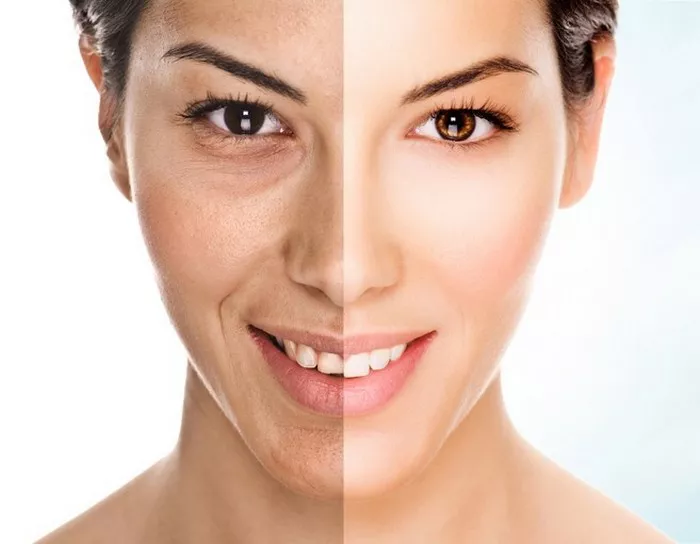Sun spots, also known as age spots or liver spots, are a common skin concern that many people wish to address. These small, dark patches of skin are typically caused by prolonged exposure to the sun’s harmful ultraviolet (UV) rays. While various treatments claim to diminish the appearance of sun spots, one popular option is microdermabrasion. But does this non-invasive procedure actually deliver on its promises? Let’s delve deeper into the world of microdermabrasion and its effectiveness in removing sun spots.
Understanding Microdermabrasion
Microdermabrasion is a cosmetic procedure that aims to exfoliate the outer layer of the skin, revealing a smoother and more radiant complexion. The technique involves using a handheld device to gently spray fine crystals onto the skin’s surface while simultaneously vacuuming them away. This process helps to eliminate dead skin cells, unclog pores, and stimulate collagen production.
The Mechanism Behind Sun Spots
Before exploring microdermabrasion’s potential to remove sun spots, it’s essential to understand the underlying causes of these pigmented patches. Sun spots are primarily the result of years of sun exposure, which leads to an overproduction of melanin—the pigment responsible for skin color. UV rays trigger the production of melanin as a protective response, but over time, excessive melanin production can lead to the formation of sun spots.
Can Microdermabrasion Fade Sun Spots?
While microdermabrasion is an effective treatment for various skin concerns, it may not be the most suitable option for eliminating sun spots. Microdermabrasion primarily targets the outermost layer of the skin, known as the stratum corneum. It helps to improve skin texture, reduce fine lines, and minimize mild acne scars. However, sun spots are located deeper within the skin layers, specifically in the epidermis and dermis.
Alternative Treatments for Sun Spots
Although microdermabrasion may not directly remove sun spots, there are alternative treatments available that specifically target these pigmented patches. One such treatment is laser therapy, which employs targeted beams of light to break down the melanin and fade sun spots gradually. Intense Pulsed Light (IPL) therapy is another option that uses a broad spectrum of light to target and fade the pigmented areas. Both of these treatments penetrate deeper into the skin layers, making them more effective at addressing sun spots.
Combining Treatments for Optimal Results
While microdermabrasion alone may not entirely remove sun spots, it can still be a beneficial component of a comprehensive skincare routine. By exfoliating the outer layer of the skin, microdermabrasion prepares the skin for other treatments, enhancing their efficacy. Therefore, combining microdermabrasion with laser therapy or IPL can yield more satisfactory results in reducing the appearance of sun spots.
Preventing Sun Spots
Prevention is always better than cure when it comes to sun spots. To protect your skin from the harmful effects of UV radiation, it is essential to adopt a diligent sun protection routine. Here are a few practical tips to minimize the risk of developing sun spots:
- Apply sunscreen: Use a broad-spectrum sunscreen with a high SPF (Sun Protection Factor) daily, even on cloudy days. Reapply every two hours, especially if you’re spending prolonged periods outdoors.
- Seek shade: When the sun is at its peak, usually between 10 a.m. and 4 p.m., try to stay in the shade as much as possible to reduce direct exposure.
- Wear protective clothing: Opt for lightweight, long-sleeved clothing, wide-brimmed hats, and UV-blocking sunglasses to shield your skin and eyes from the sun’s rays.
- Avoid tanning beds: Artificial tanning beds emit harmful UV rays, which can contribute to the development of sun spots and increase the risk of skin cancer.
- Stay hydrated: Drinking plenty of water helps maintain the overall health and hydration of your skin, reducing the likelihood of developing sun spots.
Consulting a Dermatologist
If you’re concerned about sun spots or other skin-related issues, it is advisable to consult a dermatologist. A dermatologist can assess your skin condition, recommend suitable treatments, and provide personalized advice on maintaining healthy and youthful-looking skin.
In conclusion, while microdermabrasion is a popular and effective treatment for improving skin texture and reducing various skin concerns, it may not be the most effective method for removing sun spots. Deeper treatments such as laser therapy and IPL are better suited for specifically targeting and fading sun spots. However, when combined with other treatments, microdermabrasion can enhance their effectiveness and contribute to an overall improved complexion. Remember to prioritize sun protection and consult with a dermatologist to develop a tailored skincare routine that addresses your unique needs and concerns.


